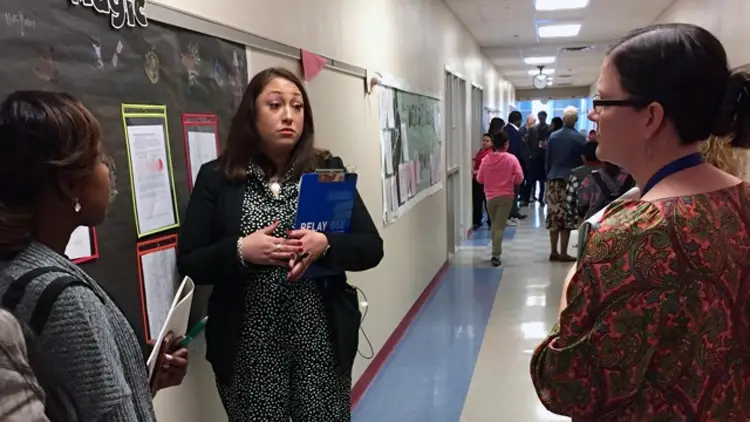The term “portfolio district” has taken on a life of its own these days. For some, it refers to places with a lot of charter schools and some coordination function. For others, it means having many district-run schools with themes. At CRPE, it’s neither of those.
Rather, the portfolio strategy is what we often call a problem-solving framework. By that, we mean that the role of government (school districts, charter authorizers, etc.) is concentrated on identifying unmet student and family needs and then working to ensure that a portfolio of learning opportunities is responsive to those needs. The portfolio approach is governance-neutral. It doesn’t matter whether schools are governed by charters, the district, or some other arrangement. What matters is whether the school has the capacity to deliver better options for students and families.
San Antonio Independent School District, under the leadership of Pedro Martinez and his team, exemplifies this problem-solving mentality.
When families voiced concerns that their kids weren’t adequately prepared to get high-paying jobs, the district asked educators and civic leaders to propose new school designs to help students develop leadership and other marketable skills valued by local businesses. CAST Tech High school, an “in-district” charter school, works with industry partners on technology and entrepreneurial careers by focusing on real world problem-solving, internships, and mentorships.
When people worried that allowing families to choose among these new schools would further segregate the city along class and income lines, central office leaders designed lottery rules for new magnet and charter schools to give low-income families preference and promote integration.
And rather than relying solely on national charter operators, SAISD gave talented school staff and principals the opportunity to redesign their own schools. While some districts complain that they don’t have enough principals to run innovative and autonomous schools, SAISD gave their most talented principals oversight over small networks of two or more redesigned schools, with associate principals assigned to each campus. This allows high-performing school leaders to maximize their impact, while also mentoring colleagues who can help form a leadership pipeline.
San Antonio still has many problems to solve. To deal with the confusion caused by having 17 school districts and growing choices in the surrounding area, families need more help with information and enrollment. Many district schools have struggled to educate kids to high levels. But if things continue to go as they have—district officials, working with local businesses and school staff to identify problems and then find creative solutions—I have high hopes for continued and sustainable improvement and a rapidly expanding portfolio of opportunities for San Antonio students.
SAISD’s approach can offer lessons for districts around the country confronting similar challenges—like developing talented school leaders, giving students more opportunities to earn meaningful job skills, and helping families navigate a growing array of options. There is no one portfolio “model” for cities to follow. Instead, cities should use the portfolio concept to address local needs and to leverage local talent.
What all portfolio cities share is a commitment to the school as the locus of improvement and accountability, a concept Martinez came to believe in based on his own experience as a district leader. Educators and families, not distant central office leaders, should be empowered to address student needs in the way they think best. The central office then can focus on equity, outcomes, and making sure that families can easily find the best fit.
This blog post originally appeared in The 74.





